It’s the holiday week so I don’t have much time to play Baldur’s Gate right now. So I thought I’d do a quick article about one aspect I really like about Baldur’s Gate’s design. It’s one you don’t even know is there unless you specifically look for it.
Cursed Treasure
Relatively early in the game you will stumble upon an ogre with a strange fetish. Either through early exploration, or after getting a quest in the Friendly Arm, most players will encounter this adversary.
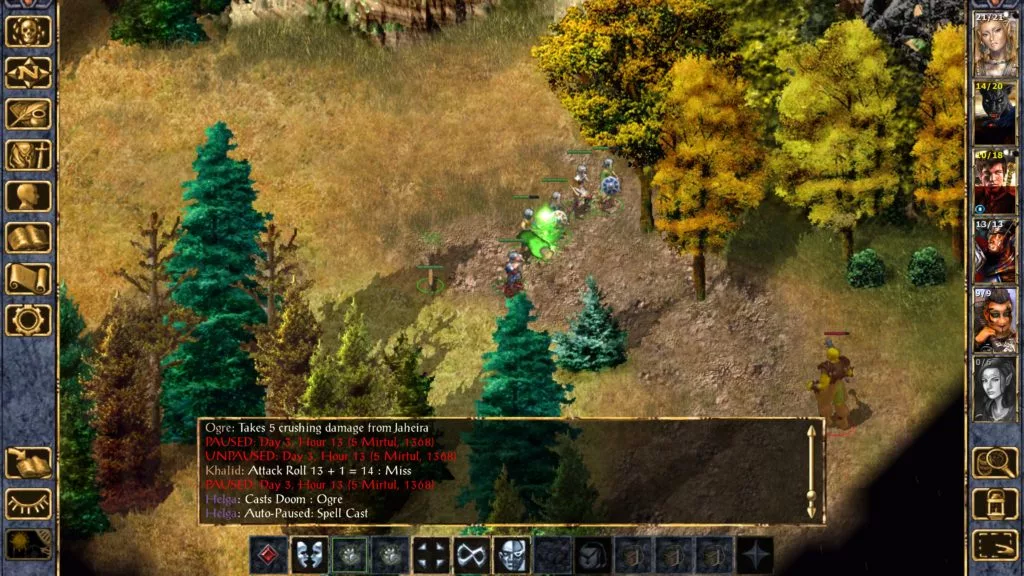
It can be a challenging fight, especially for people new to the game. But if you defeat the ogre you will be rewarded with two magical belts. These belts are unidentified so you have no idea what they actually do.
If you’ve played the game you already know where this is going. You can’t identify the belts so you just try them on to see what they do. And that’s when you find one of your characters has swapped genders and can’t remove the belt.
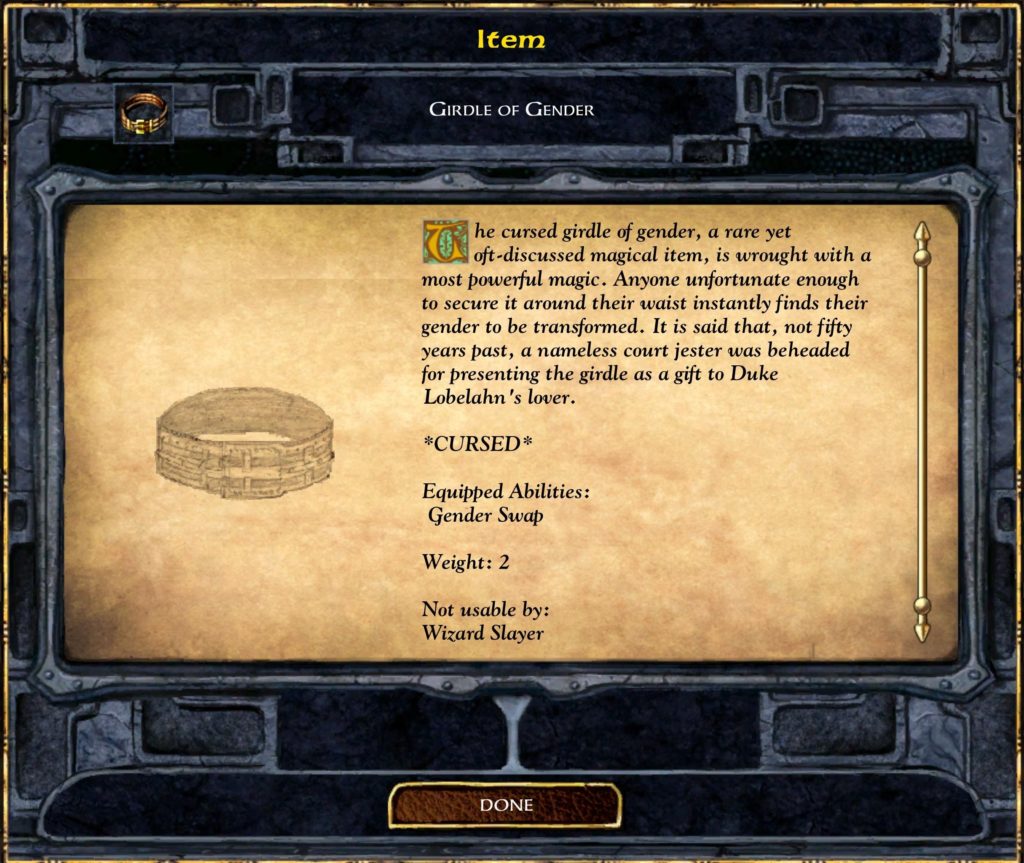
It’s a story practically everyone experiences during their first run of the game. It can be a funny moment when you realise how silly the game can be. The Girdle of Masculinity/Feminity is one of the most well known and least used magic items in the game.
But this magic item is serving another function that few players are aware of. One that sheds a light onto the brilliance of the game’s design. You see there’s a well known secret about this part of the game.
You Haven’t Finished the Tutorial Yet
The Prologue in Candlekeep serves as the games tutorial. You can talk to many sages who will break the fourth wall to teach you the mechanics of the game. But many people will skip or skim over a lot of this, since they want to get into the action.
The game designers were aware of this, and wanted to cater to the kind of people that learn by doing. Most of the lead up of the game until Nashkel is littered with small things that teach you how to play the game without you even realising it.
The gender bending Girdle is more than just a bit of fun, it is placed in an early area precisely to teach you about cursed items. And, in case you miss it, you will get given a quest specifically to hunt down said fetishistic ogre.
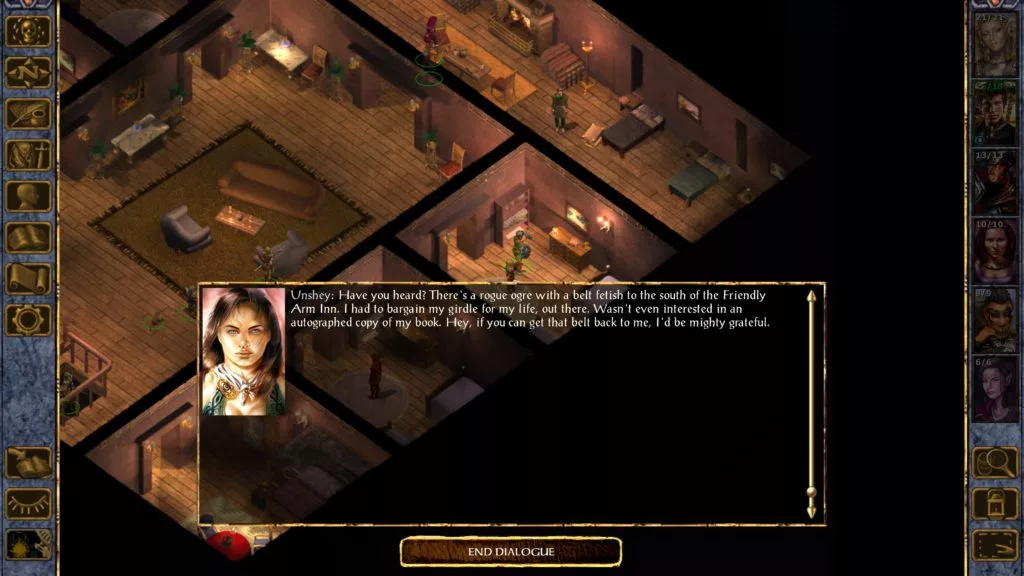
The “curse” itself is fairly benign with no actual impact on gameplay. There are very few magical belts this early in the game, so it isn’t taking up an important slot. This means that players who fall for the trap aren’t really penalised for wearing the belt.
But if they do fall for it, the message is clear. Be careful when trying out unidentified items. Some of them are cursed, and these curses will only get worse. It’s a great way to teach the player to be wary of magic items for the rest of the game.
The first chapter of the game is littered with little moments like this. The random encounters in the first area of the game will happen more often if you wander away from the main road. Most players have been killed by a lone wolf when trying to reach Gorion’s body.
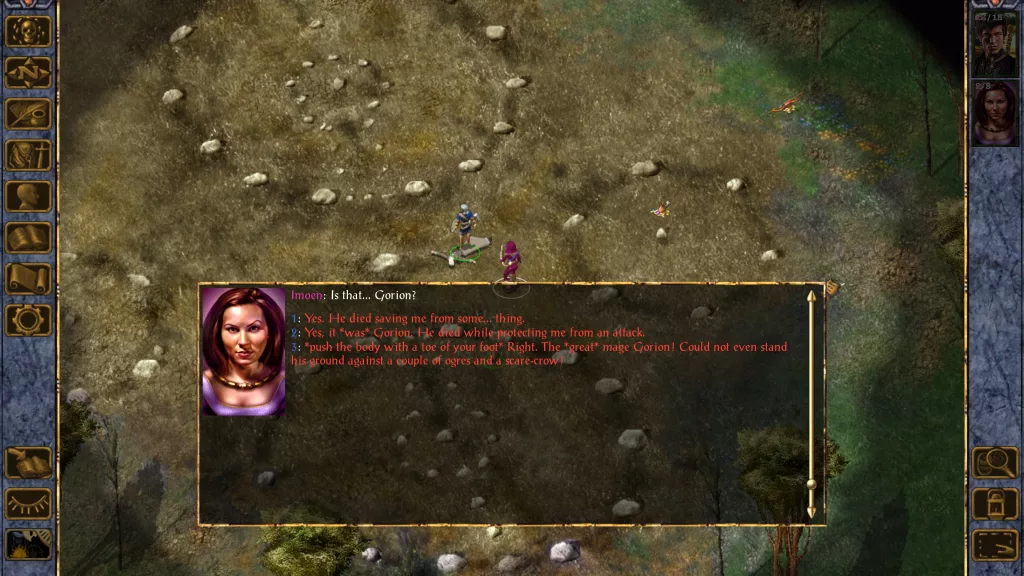
But if you stick to the path the encounters will be fewer and easier. This teaches you that sticking to the main road is safer, and indicates that areas further away from settlements will be full of dangerous enemies. And the first time you die to that wolf teaches you that the game will not hold back if you go out there.
If you follow the path you will encounter a traveller telling you it’s better to travel in groups. Further up the road you will meet Xzar and Montaron, the first potential companions. There’s something about them though – they don’t seem all that trustworthy.
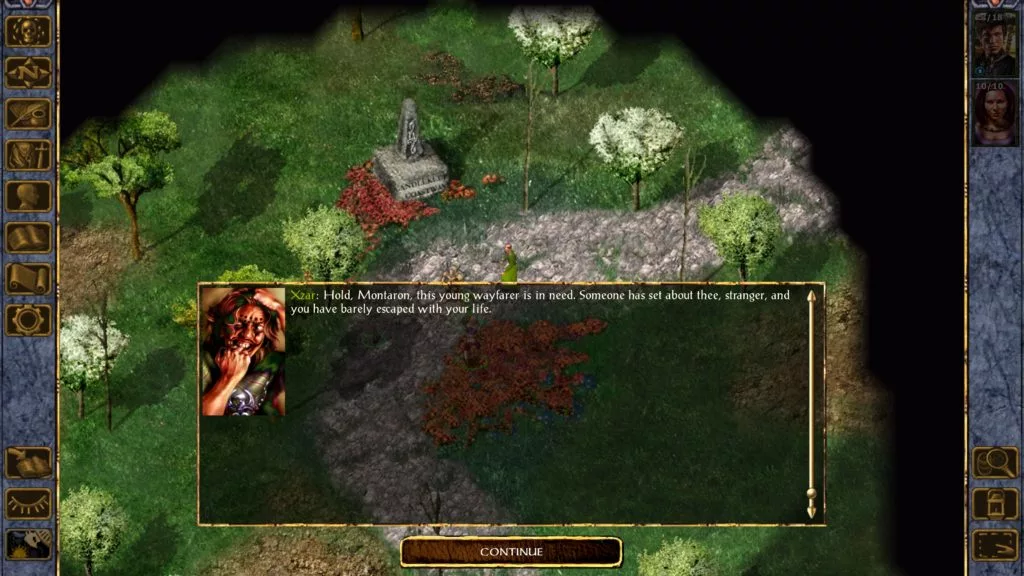
If you accept them as companions you will quickly learn that they are evil. This is the game telling you that not all the characters you meet will be good, and that you don’t have to have an entirely good party. It’s also telling you that you don’t HAVE to accept everyone into your party.
I could go on. I could go on about how Joia teaches you that reputation can be changed by doing good deeds. Or how Tarnesh teaches you to be on your guard at all times. Maybe how Golin Vend teaches you to talk to people to get more information. Or even jow Silke teaches you to not always trust everyone when given a quest.
The first chapter is littered with moments like this. You are still in a tutorial and you don’t even realise it. Even the Nashkel Mines at the start of Chapter 2 serve as a kind of tutorial for dungeon crawling.
There has been much discussion in games revolving around specific tutorial levels versus teaching players as they go. Baldur’s Gate manages to pull off both, and you may not have even realised it.
There’s Always a Tutorial
I’m singing Baldur’s Gate’s praises here, and rightly so in my opinion. But it’s not the only game that uses this kind of design, and is far from the first. It’s actually very common for this kind of design to be applied in a video game.
As an example, the first 30 seconds of Super Mario Bros teaches you basically everything you need to know about the game: enemies kill you, jump on them to kill them instead, question mark blocks give you power ups or a coin, and you can destroy normal blocks as big Mario. The blocks, the power ups, and the goomba are all placed at the beginning of the level on purpose, so that even new players can quickly get a grasp of the game.
You will see this all the time. Even in games with explicit tutorial levels, there will often be something after to teach you about a new game mechanic. And if it’s done well, as it is in Baldur’s Gate, you won’t even realise you’re still playing the tutorial.




